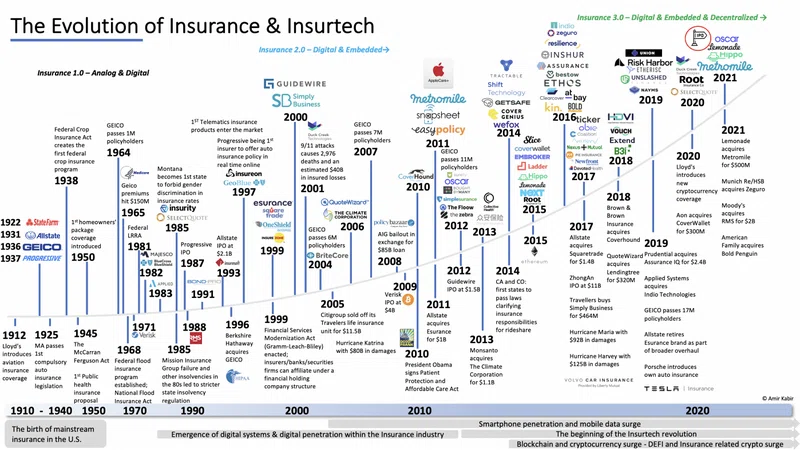Elon Musk, rockets, Mars, and SpaceX– everyone knows the most valuable private company in the US, what it’s done, and where it’s bound. But who is number two? In March of 2021, Stripe raised a $600M Series H round that secured its status as the second-most valuable private company in the United States, with a jaw-dropping 95 billion dollar valuation… and here’s the thing: people are saying it’s undervalued. Here’s my attempt to bundle up how two brothers from rural Ireland have built Silicon Valley’s latest fairytale, what Stripe does, and how it’s on track to change the world — or at least how we pay for things.
Flash back to 2005, when sixteen year old Patrick Collison receives Ireland’s young scientist of the year award for creating a new dialect in the LISP programming language. A year later he graduates high school early, heads to Boston, and enrolls in MIT. Meanwhile, Patrick’s younger brother John gets the highest score in history on Ireland’s nation-wide high school examination (take a wild guess whose record he broke), just before enrolling at Harvard in the class of 2009. As in every good super-fast-growth tech tale, our protagonists drop out of their respective institutions pretty quickly. The Collisons trade cap and gown to pursue an idea: they intend to change the way money moves through the internet.
In 2010, when Patrick and John Collison founded Stripe, ecommerce was well established and innovating quickly. At the start of the new decade eBay became available on the iPad, Amazon was expanding internationally, and a fast-growing, venture backed disruptor called Shopify was paving the way for a new generation of online sellers. The financial technology that underlay these platforms, however, was comparatively archaic. At the time, PayPal was the alpha player. Founded over ten years ago by the legendary trio of Elon Musk, Peter Thiel, and Max Levchin, PayPal made it ten times easier to transfer money online. They served as the middleman between online merchants, consumers, banks, and credit card companies, organizing the flow of information and dollars in a fast and secure way. A lot had changed since PayPal’s founding in 1998, though, and the tech didn’t keep pace. Enter Patrick and John Collison, who had a vision for a better payment infrastructure with an easy setup process that worked everywhere, every time.
So to understand what Stripe does you need to first understand two entities: A payment gateway and a payment service provider (PSP). Payment gateways are where you go to input your card information. They can either exist virtually– where you type in your credit card info after hitting ‘buy now’, or take a physical form– the small point-of-sale (POS) card readers in every mom and pop. After customers have submitted their card information either virtually or online, it enters the world of the PSP. With every credit card transaction, information and currency go through five sets of hands: those of the consumer, the merchant, the merchant’s bank (known as the acquiring bank), the credit card company, and the consumer’s bank (known as the issuing bank). With a debit card this process is similar but simplified. Payment service providers live in the space between the merchant and the merchant’s bank, providing the service of ensuring that the information of a payment is legit (the consumer has the money to pay up), and guaranteeing that the cash actually ends up in the merchant’s account. In exchange for this, PSPs take a very small slice of the pie.
Before PSPs, merchants were required to deal directly with their acquiring bank through a merchant account. The merchant account was located on the servers of an acquiring bank, processed the credit card information and money from buyers, and transferred the revenue to the merchant’s bank account. Good in theory, but not something for the impatient in practice! Setting up a merchant account was no easy feat. Between making sure regulations were met, validating that compliance was fulfilled, establishing relationships with card companies, paying dizzying fees, and tolerating weeks of delay all while assuming complete risk of any card fraud, the process was a nightmare. Every business accepting card payments dealt with this issue– until the tech boom at the end of the 1990s.
PayPal burst onto the scene in 1998 as the first major PSP. It enabled businesses to easily set up an account and immediately begin accepting payments of all kinds– from credit cards to debit cards to ACH payments and more. The company grew quickly and went public, eventually becoming the industry’s dominant player with the lion’s share of the market in 2010. Despite being the widely accepted standard in the payment industry, the Collison brothers saw a lot of room for improvement in PayPal. A new generation of software companies were coming of age, and PayPal’s tech did not meet their needs.
Now-behemoths Zoom, Lyft, and Blue Apron were all founded in 2010. They and millions of other software-driven businesses required a PSP that accepted all types of payment, could be set up quickly, and, critically, could integrate into their software platform with ease. The technical term for what these future unicorns needed was simpler API integration. This essentially meant they wanted to purchase code that solved all their annoying payment problems and could be shaped to work seamlessly with their websites and products. Highly effective and easy to integrate– the perfect payment infrastructure.
Stripe rose to the challenge with its first product. Simple was an API that consisted of seven lines of code that, when copied and pasted, allowed businesses to immediately start accepting one-off payments. In the fintech world, these seven lines offered an inkling of the simple, yet powerful functionality Stripe promised to provide in the future. From 2011 to 2018 the company expanded rapidly. Stripe launched a host of new products that offered targeted solutions for all different types of software businesses. Connect provided a payment API for platform businesses that connect buyers to sellers, like AirBnB; Billing enabled subscription models like newsletters to monetize; Stripe Issuing empowered schemes that required virtual cards, like DoorDash and UberEats; and Stripe Payouts brought payment service to online freelancers. The company’s valuation reflected its explosive growth: Silicon Valley’s most esteemed investors cut larger and larger checks every other year as the valuation climbed from $100M in 2012 to $3.5B in 2014 to $36B in April of 2020. By this time Stripe was processing billions of dollars from millions of businesses all over the world through their APIs and taking a 2.9% + 30¢ fee every time. They did so in silence, without loud marketing campaigns or in-your-face paid Google advertisements. The overwhelming excellence of the product spoke for itself. And so while everyone in San Francisco and some in New York was aware of what the Collison brothers were accomplishing, the other hundreds of millions of Americans went through daily life completely ignorant about their dependence on what couple brilliant siblings from the Irish countryside had built.
One key to Stripe’s growth was its focus on selling the product to software engineers, rather than the finance people in companies. Software businesses were the future and engineers were individuals building it. Stripe’s products made engineers’ lives easier, allowing them to rest assured payment would happen seamlessly and focus on creating products. This separated Stripe from some of its competitors like Square, Toast, and Adyen, many of whom focused more on brick-and-mortar integration and marketed to CFO types.
The primary improvement Stripe offers over PayPal continues to be easier API integration. A close second, though, is in the category of data portability. Merchants using PayPal don’t have a lot of agency over the data they gather. Terabytes of very valuable information sit on PayPal’s servers, including credit card information, customer name, and payment history. If a merchant wants to switch PSPs, PayPal has the notorious habit of freezing accounts and obstructing the process. They don’t want to let their customers leave. Stripe, on the other hand, makes a point to emphasize complete data portability which instills a level of trust and signals a commitment to quality service. Combine this with zero set up costs, no monthly fees, and nullified fraud risk, and you quickly end up with a no-brainer decision for merchants choosing a payment infrastructure. Millions of merchants made the easy decision. By early 2020 Stripe’s product, team, and strategy produced a $35B business, but it was crucial timing that would ignite tremendous revenue growth and send the valuation into the stratosphere.
The onset of the pandemic in the spring of 2020 and the lockdowns that ensued spurred a huge uptick in ecommerce and SaaS (Software as a Service) activity. Zoom, a Stripe customer, saw a 2000% increase in daily participants, while Instacart and Slack posted 300% and 80% jumps in demand, respectively. Online penetration of retail sales doubled during the pandemic, growing from 16% to 34%, as ecommerce became increasingly necessary. The diversity and robustness of Stripe’s products were fit for the challenge of increased volume. To make matters better, Stripe’s growth coincided with comparatively poor performances from some of its competitors. Square, which has a large presence in Brick-and-Mortar establishments, saw a decline in Q2 2020 revenue as in-person shopping ceased. Similarly, Toast, which offers POS and PSP solutions for the restaurant industry, saw huge drops in revenue as restaurants closed across the world. Venture capitalists licked their lips at Stripe’s numbers; Sequoia Capital led an oversubscribed series H in Q1 2021 that valued Stripe at $95B.
Since around 2012, Stripe has also been expanding a host of other products. In line with its goal of “increasing the GDP of the internet”, these offerings add on to their fast and easy payment solutions by protecting card information from fraud, providing businesses credit and debt products priced using in-house data, and analytics powered by Stripe’s growing database of information on companies. In addition, Stripe has released a platform called Stripe Atlas which helps businesses from all around the world incorporate in the US. Stripe’s customer list features names like Google and Amazon, yet they still drive innovations that enable entrepreneurs from developing countries to get a foothold and grow. The last dozen years have seen groundbreaking developments in the way we move, eat, talk, learn, and play. Stripe sits at the nexus, letting us do it all more easily.
“Our strategy is very deliberately to serve both ends of the continuum (startups and enterprises), and every point in between. This ensures we can provide the most powerful functionality to the youngest companies in the world, and that we can provide the most forward-thinking technology to the largest and most established.”
Patrick Collison on Stripe’s Direction, 2019
Despite the tremendous strides Stripe has made since its humble beginnings in 2010, the future is characterized by some uncertainty. New players constantly seek to enter the payments game, making the space notoriously low-margin. Stripe is the best of the best for online payment solutions, but now that it has paved the path to success many other smaller competitors will seek to emulate it. On top of this, PayPal isn’t going anywhere anytime soon. Despite having an inferior product, the firm has maintained its dominance through executing strategic acquisitions of new players like Braintree and putting in place high switching costs for merchants. PayPal continues to control around 50% of the market, servicing around 460k websites compared to Stripe’s 160k.
Even still, almost all signs point Stripe to the moon! With only 34% of US retail sales occurring online, the potential for Stripe to grow even more as a payment solution for the internet economy is tremendous. Nearly 80% of US internet users have purchased something through a Stripe-powered business, and there is no indication that this figure is going anywhere but up. Stripe is the gold standard for startups– unearthing an elegant solution to a universally crucial problem and continuing to innovate feverishly even in the face of success that would force most of us into complacency. Behind it all are two ingenious brothers with a little idea of how to better transfer bits and dollars through the internet.
Hopefully this article will open your eyes to what Stripe has done and where it’s undoubtedly bound. And next time SpaceX sends a rocket into orbit, spare a thought for the brothers who probably helped pay for it.
Special thanks to Sam Harshe for his help throughout the editing process.













